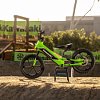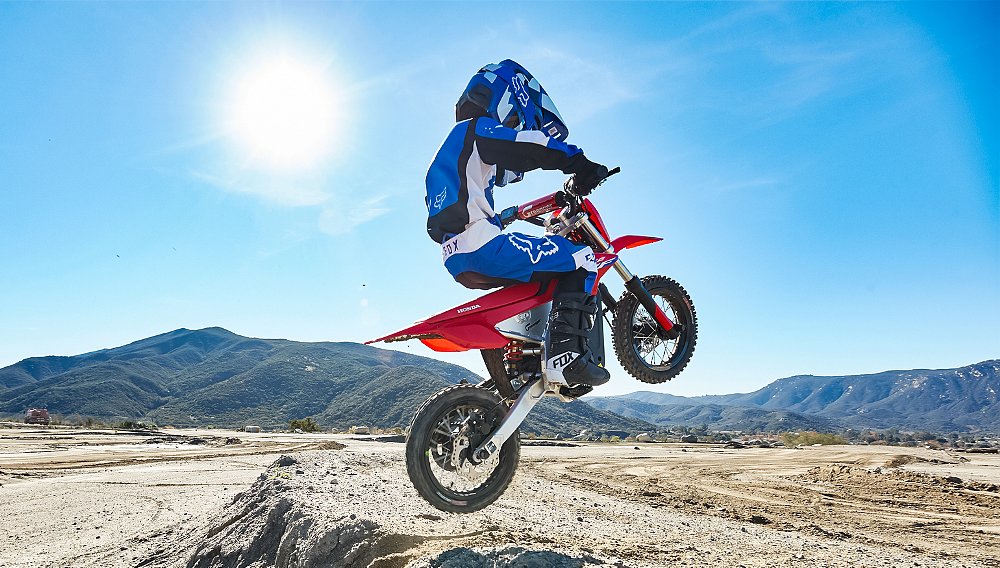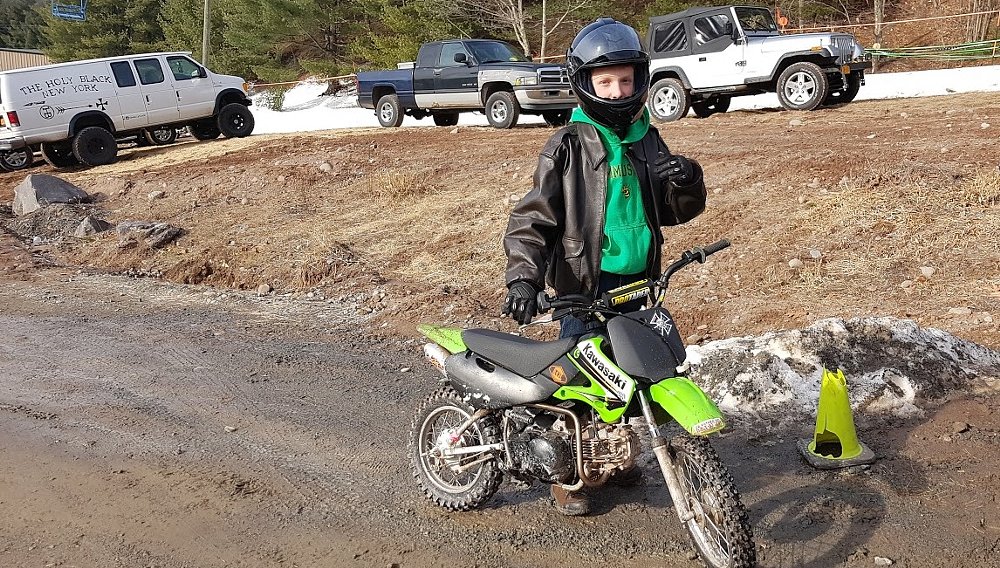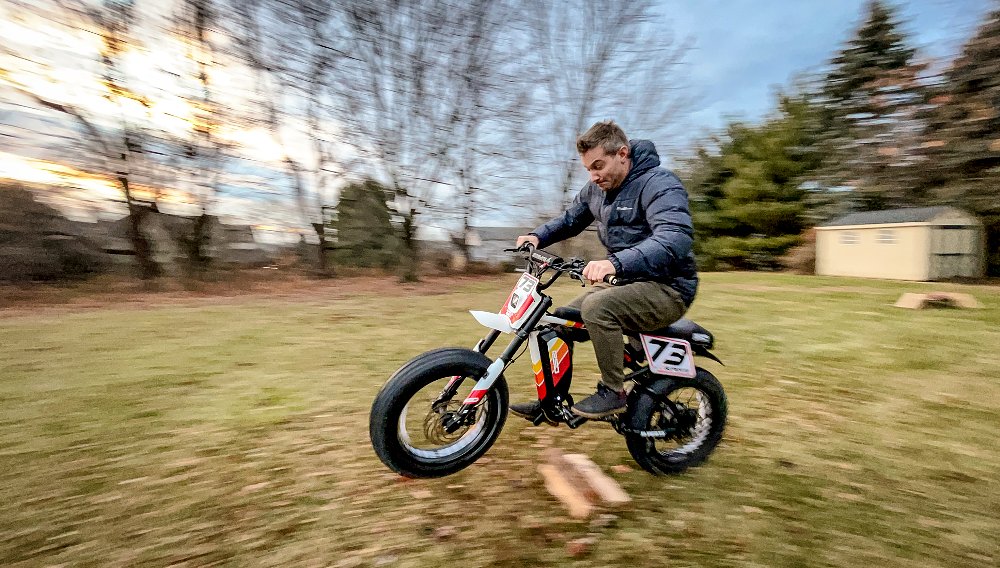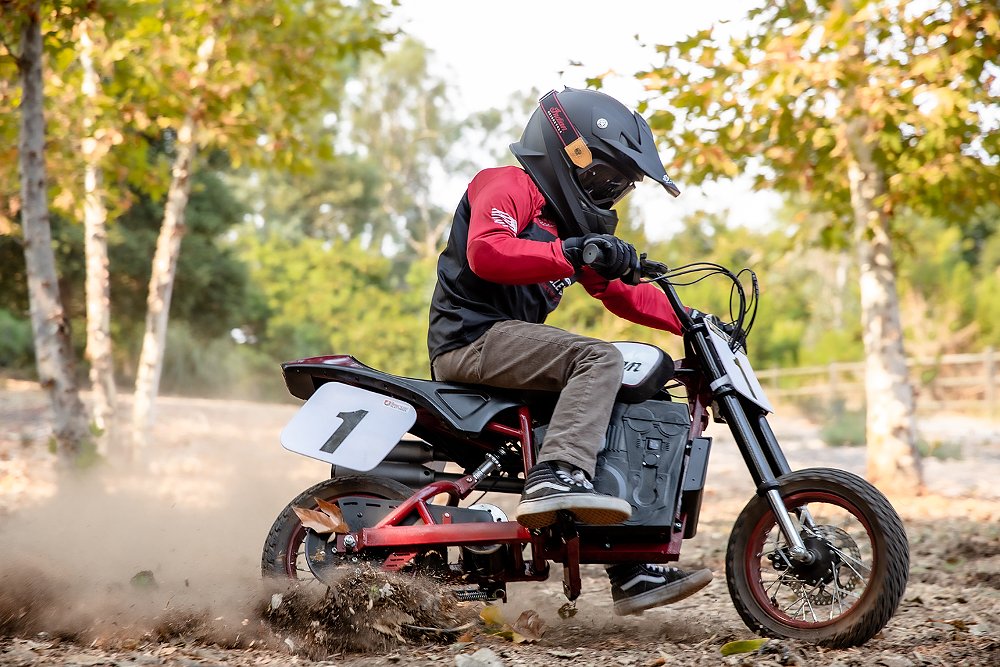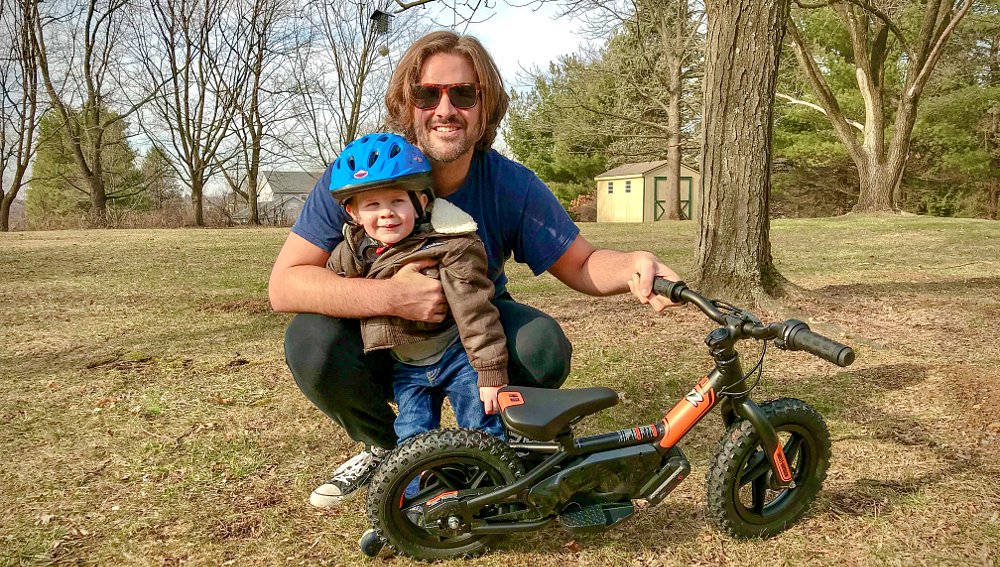Demand for small electric bikes for kids is growing, and Kawasaki is the latest manufacturer to introduce a youth model. It’s called the Elektrode, and with an MSRP of $1,099, it’s the most affordable way to get Junior on a new Kawi.
The Elektrode is actually Kawasaki’s first electric two-wheeler. In a refreshing change from some of the other balance bikes we’ve seen recently, the Elektrode isn’t a rebranded version of an existing model. Instead, Kawasaki designed and manufactured its own balance bike that should fit a wide range of young riders. The new bike weighs just 32 pounds and offers seat heights from 16.1 inches to 20.5 inches. It’s primarily intended for ages three to eight.
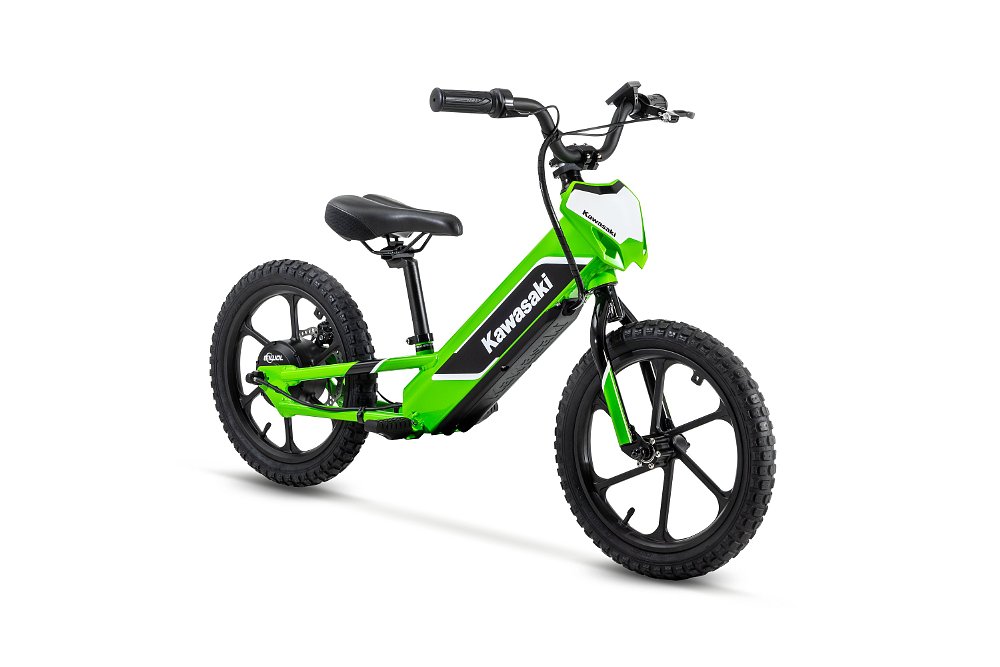
A non-removable lithium-ion battery (36V, 5.1Ah) sits in the frame’s beefy downtube. The Elektrode has a runtime of about 2.5 hours, or approximately nine miles, per charge, and it takes another 2.5 hours to fully recharge. Kawasaki notes that these figures will vary based on “rider weight, speed, and riding conditions.”
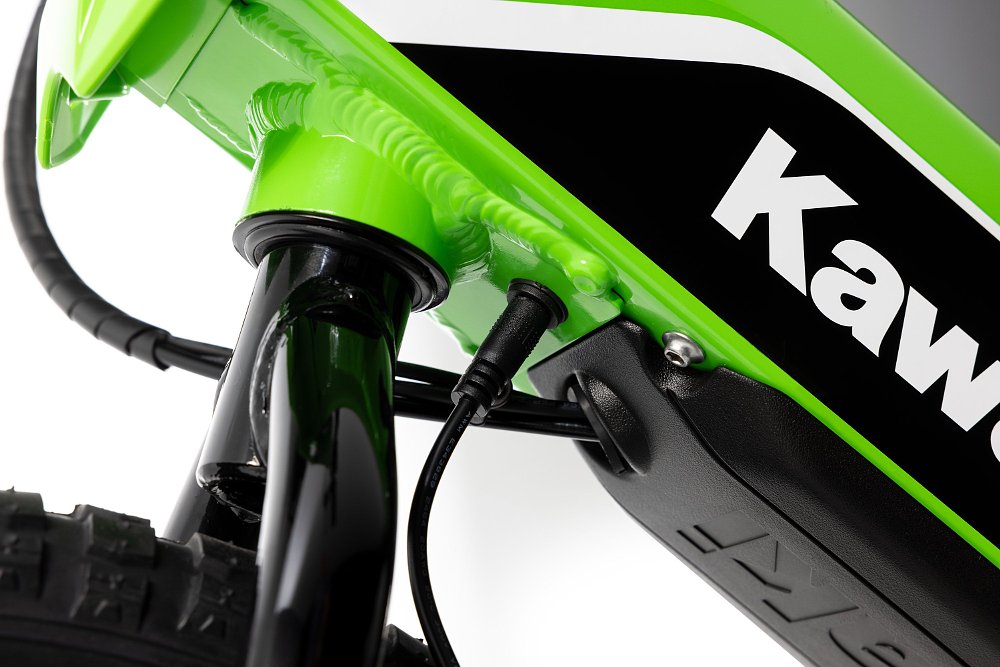
Elektrode bikes have three speed modes (approximately 5 mph, 7 mph, and 12 mph) to select from a simple handlebar-mounted screen. Ride modes can only be changed when stopped, and a passcode lock gives adults control over changes to the settings. Kawasaki also suggests that the Elektrode can be used with the power turned off as a balance bike, although an unpowered Strider balance bike with 14-inch wheels weighs 20 pounds less.
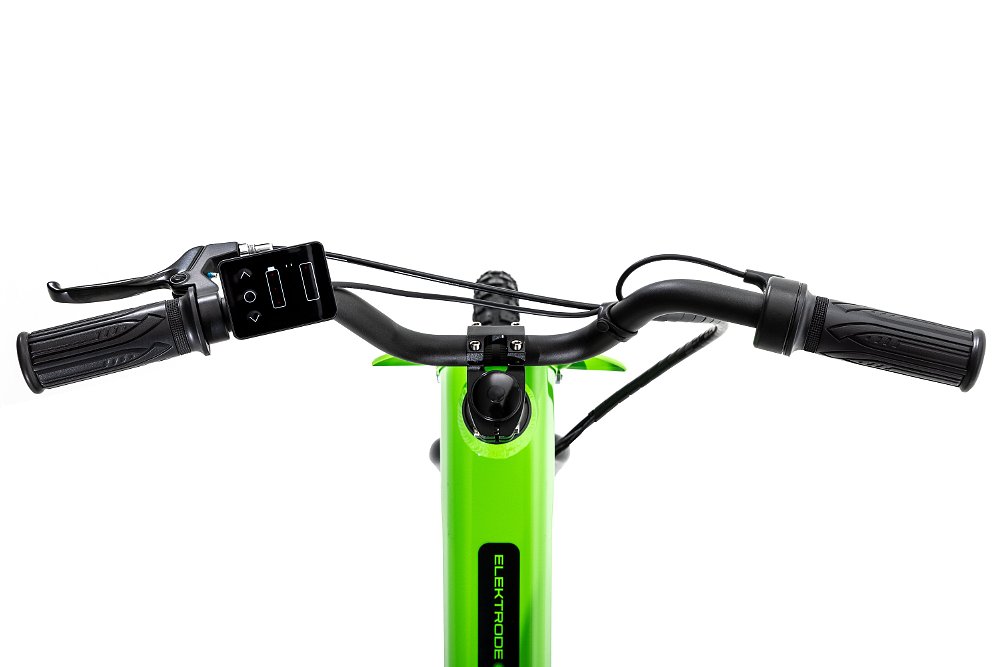
The Elektrode has just one brake: a cable-actuated, 160 mm disc brake. Notice that the brake lever is mounted on the left. A bicycle manufacturer might have mounted the rear brake lever on the right, but Kawasaki’s choice to keep the lever on the left has a few advantages for kids starting their motorcycling journeys. The right lever is reserved for the front brake on motorcycles, so the Elektrode’s arrangement avoids teaching a potentially dangerous habit. It also allows the rider to dedicate one hand to acceleration, and the other to braking. (The brake perch looks easy enough to swap to the other side if needed.)
Kawasaki’s marketing materials position the Elektrode as an entry point into their off-road offerings, especially the KX line of dirt bikes. That makes sense, since there would be quite a few formative years of riding between a kids’ bike like the Elektrode and riding a motorcycle on the street. The Elektrode is a sensible play by Team Green as interest in balance bikes and off-road riding continue to climb.
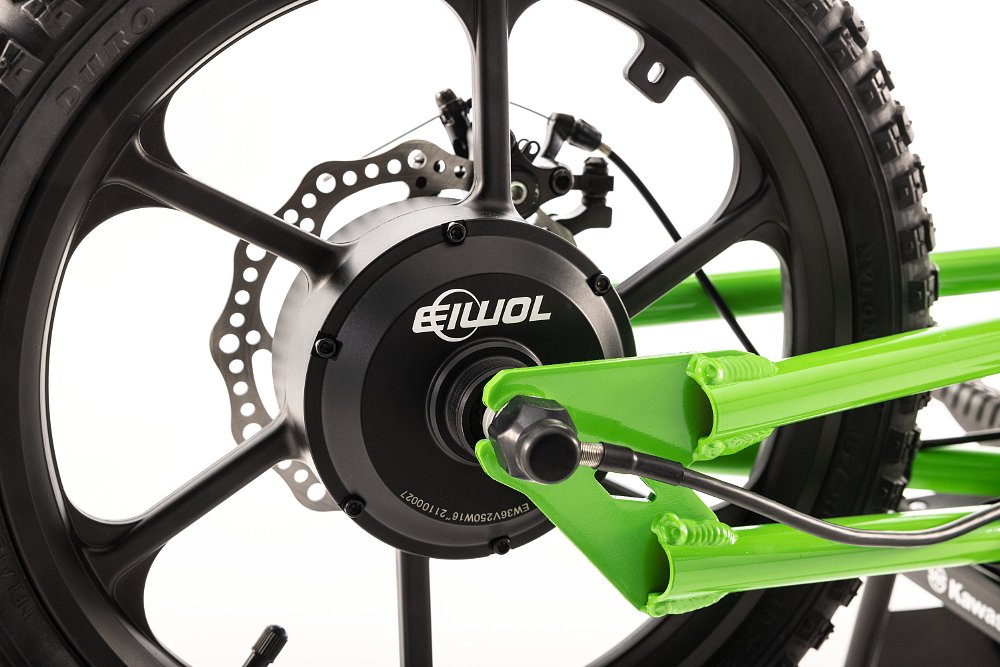
How the Elektrode fits into the expanding competition
The Elektrode will have to fight for parents’ attention in a growing field of competitors. The closest is probably STACYC’s 16eDRIVE, or its Harley-branded twin, the IRONe16 (both $1,049). Although the STACYC/H-D costs about the same as the Elektrode, it has a significantly shorter runtime in exchange for less weight and hot-swappable batteries. Indian sells a re-branded Razor bike as the e-FTR Jr. ($750).
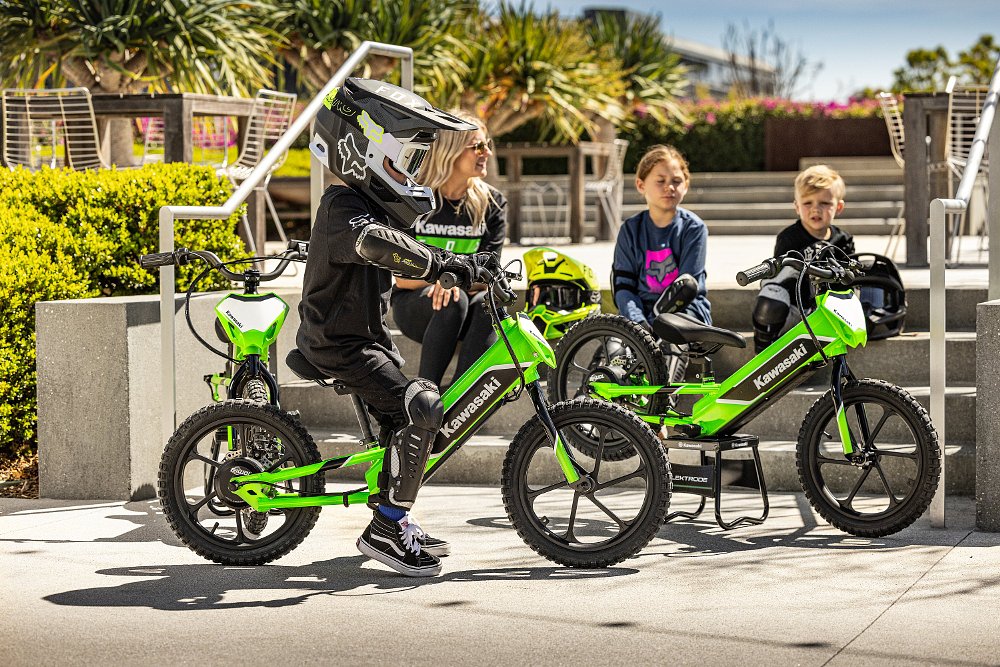
The Indian looks more like a big kid’s machine, though it weighs three times as much as the Elektrode with less speed and runtime. Then there’s the new Honda CRF-E2, which was co-developed with Greenger Electronic Technology to be equivalent to a 50 cc dirt bike. The CRF-E2 ($2,950) offers full suspension, dual disc brakes, a two-hour runtime (approximate, will vary based on rider and conditions), plus it weighs a hair less than the e-FTR.
The most competitive kid racers can step up to the KTM SX-E 5 ($5,399), or its white/blue/yellow twin, the Husqvarna EE 5 ($5,199) These electric bikes are truly miniaturized race machines for kids with some riding experience under their belts. These are just a few examples of an ever-growing market that could have a major influence on the motorcyclists of tomorrow.

 Membership
Membership



